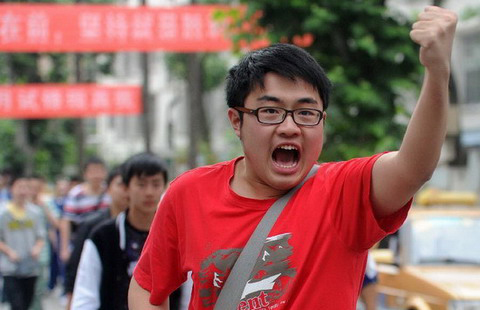Driving force for transition
By Zhu Jin (China Daily) Updated: 2012-04-27 08:05
Since reform and opening-up, China has experienced a long-term trade surplus as a result of its booming processing trade, which has benefited from its abundant labor resources and relatively low wages. The comparative advantage of China's labor has served as a major driving force for its development over the last three decades.
However, according to data from the United Nations, China's demographic dividend may come to an end in 2013. Between 2014 and 2050, the output per capita growth will decline by 0.45 percent per year as a result of the changing age structure.
In recent years, various industries have experienced a labor shortage. Not only in the developed east coast region, but also in the traditionally labor-abundant provinces, such as Sichuan and Henan.
At the same time, with the labor market increasingly mature and supply shrinking, labor costs are gradually rising. The average salary in China's manufacturing sector has been increasing rapidly every year, between 1999 and 2009, the average hourly manufacturing wage increased by 13.81 percent.
In February, Foxconn raised its wages by 16 to 25 percent, to more than 2,200 yuan ($349) per month on average. Other manufacturers have followed Foxconn's lead, especially those in coastal areas that are under enormous pressure from the tightening labor supply.
The labor shortage and rising labor costs are prompting more and more labor-intensive manufacturing to move from the southeast coastal areas to the central and western regions, where the demographic dividend can still be exploited. Some scholars estimate that there are still about 50 million rural surplus laborers available in the rural areas.
Although scholars disagree when the labor surplus will become a labor shortage - the Lewis Turning Point - they cannot deny that China is losing its demographic dividend.
Actually, the coming of the Lewis Turning Point is not a crisis, but an opportunity.
While it will be accompanied by a lot of uncertainties and challenges it also presents an opportunity for China to realize industrial upgrading and the adjustment of labor structure, which will pave the way for successfully transforming its development mode.
During the past three decades, the processing trade has been the main driving force for China's economic growth. By exporting cheap "Made in China" products, the country has subsidized the cost of global production and subsidized the welfare in developed countries.
But relying solely on investment in physical capital for economic growth is unsustainable. It will not maintain the competitiveness of China's manufacturing industry. It is imperative that China find new driving forces for its economic transition.
Through human capital accumulation, increasing the skills of labor through education and training, China can make technical efficiency the main source of its total factor productivity, which will be conducive to upgrading China's manufacturing industry in the global value chain.
In fact, China's labor shortage is actually a structural labor problem. For example, in Guangdong, small and medium-sized enterprises, rather than large enterprises lack labor; and it is senior technicians, rather than general workers that are in short supply. Human capital accumulation will ease the labor shortage, and improve efficiency.
Companies must pay more attention to labor quality rather than simply depending on quantitative expansion and the scale of aggregation to profit.
At present, China's economic transformation is relying on consumption to be the driving force of economic growth and expanding domestic demand to boost economic vitality. Increased labor compensation will not only help promote consumption but will also narrow the income gap.
According to the development experiences of the Republic of Korea and Japan, after passing the Lewis Turning Point, citizens in those countries spent more on health, communications, entertainment and education, boosting the service sector, which also contributed to the upgrading of the overall industrial structure.
Rising wages will help to advance people's livelihoods, especially migrant workers'. To this end, the authorities should speed up reform of the household registration system to endow migrant workers equal rights to urban residents and eliminate the institutional barriers to labor mobility as soon as possible.
As China is undergoing a period of economic transition, from extensive to intensive and from low value-added to high value-added, reaching the Lewis Turning Point is an opportunity to upgrade the industrial structure, rebalance the distribution of income and promote domestic demand growth.
The author is a writer with China Daily.
zhujin@chinadaily.com.cn
(China Daily 04/27/2012 page9)











